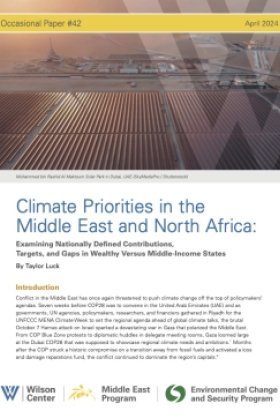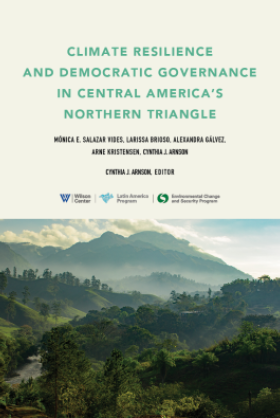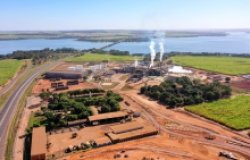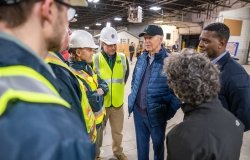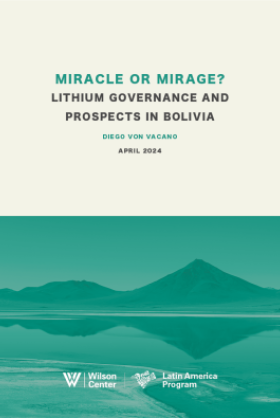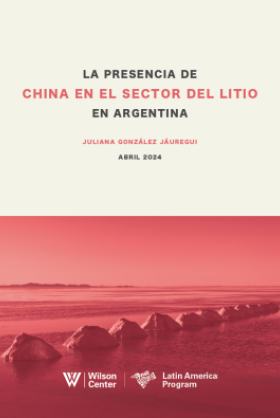Observing Earth: Using Satellite Data for International Development
Overview
“Interest in earth observation—and in particular, the value to what we do in development internationally—has never been higher,” said Jenny Frankel-Reed, adaptation team lead at the U.S. Agency for International Development (USAID). Frankel-Reed spoke at the Wilson Center’s recent panel discussion of the earth observation data program known as SERVIR, which included insights from USAID’s soon-to-be-released evaluation of the program.
First conceived in 2005, SERVIR is a joint initiative of USAID and NASA that partners with regional technical institutions around the world to get earth observation information into the hands of decision-makers to improve development outcomes. According to Frankel-Reed, SERVIR currently assists 47 countries through a network of 28 satellites providing real-time, actionable earth observation data.
Data Is King
SERVIR’s satellite technology documents problems ranging from droughts and flooding to deforestation and food and water security. SERVIR data also fills gaps in observation records, providing more frequent info in remote areas, validating other data sets, increasing accountability, reducing the need for costly local monitoring, and incentivizing data sharing, said Kevin Coffey, USAID’s adaptation adviser.
“Our work is increasingly focusing in on areas of what we would describe as ‘high fragility’… and it can be very difficult for even…basic needs humanitarian actors to get in,” said David Nicholson of Mercy Corps. “So being able to triangulate the information we do get from informers on the ground or conversations we can have with refugees…being able to triangulate that with earth observation that comes to us in real time is absolutely priceless.”
USAID’s evaluation highlighted a number of success stories:
- In Kenya, the world’s third-largest producer of black tea, unpredictable frost patterns can cause farmers to lose up to 20 percent of their crops in an economy made up primarily of smallholder farmers. By using predictive data from SERVIR satellites, the Kenyan government has been able to reduce these losses by 40 percent.
- The El Salvador Red Tide Monitoring Commission has been using fully integrated algal bloom data provided by SERVIR satellites for more than a decade to help prevent illness from contaminated seafood.
- In Bangladesh, SERVIR has helped extend flood warnings by a full three days, providing up to more than a week’s advance notice.
However, government officials in Bangladesh are still using the data on a provisional basis; they wanted four years of data before fully integrating it into their regular bulletins and advisories. Thus, as the USAID evaluation points out, the Bangladesh flood warning product cannot be considered a “full use” yet of SERVIR.
This highlights perhaps the biggest challenge USAID and NASA face in the next stage of SERVIR’s development: how to drive greater usage of the technologies. “It’s not a matter of putting data up on a website for people to discover; not a matter of creating models that generate interesting analysis that can support publications,” said Frankel-Reed.
Rather, she said, it’s about three pivotal factors that “have less to do with science and technology than you think”:
- Improved capacity of analysts to use the information and work with it;
- Improved awareness of and access to the information that they need, and
- Provision of user-tailored information that answers a question and that can be actionable.
This last point is key: Tools have to be able to be integrated, rather than stand-alone, if they are going to generate continued and productive use.
Strengthening Regional Hubs for Sustainability
SERVIR currently operates out of four hub regions: West Africa, East and South Africa, the Hindu Kush, and the Lower Mekong. A fifth hub, in the Amazon basin, is expected to begin operations later this year, while the original hub in Central America is now limited to legacy projects. “The hubs really are the roots of the program,” said Frankel-Reed.
To make the use of earth observation data more sustainable, “the goal is to develop capacity through [the regional hubs] so they can help their regions, rather than just providing solutions from USAID and NASA,” said Frankel-Reed.
Coffey stressed a shift from “one-off products to sustainable services,” noting that the regional hub model is being strengthened by new policies requiring U.S.-based scientists to pair with counterparts in SERVIR’s regional hubs, thus ensuring greater program sustainability in the long term.
For wider usage and better development outcomes, “the barriers are not necessarily technical ones,” said Lawrence Friedl, NASA”s director of applied sciences. Rather, the most difficult barriers to overcome are often related to infrastructure and engagement. “A lot of what the evaluation is about is…not the technologies, but the uses,” said Coffey. For example, a data-driven fire prevention tool succeeded in Guatemala but floundered in Nepal because of a lack of infrastructure for fighting fires identified by SERVIR.
Though work remains to be done in strengthening the hubs and encouraging further end-user participation, earth observation data and the SERVIR model are game-changers in the development field. “The impacts are real, measurable, and in concrete and real terms,” said Friedl.
“It has become very clear to us that earth observation data has the potential to be transformative for how we go about our work,” said Nicholson.
Event Resources:
Written by Graham Norwood and edited by Meaghan Parker.
Panelists
Isaac Morrison
Kevin Coffey
Lawrence Friedl
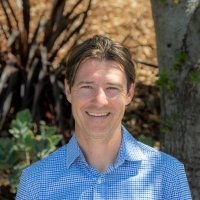
David Nicholson
Hosted By

Environmental Change and Security Program
The Environmental Change and Security Program (ECSP) explores the connections between environmental change, health, and population dynamics and their links to conflict, human insecurity, and foreign policy. Read more

Global Risk and Resilience Program
The Global Risk and Resilience Program (GRRP) seeks to support the development of inclusive, resilient networks in local communities facing global change. By providing a platform for sharing lessons, mapping knowledge, and linking people and ideas, GRRP and its affiliated programs empower policymakers, practitioners, and community members to participate in the global dialogue on sustainability and resilience. Empowered communities are better able to develop flexible, diverse, and equitable networks of resilience that can improve their health, preserve their natural resources, and build peace between people in a changing world. Read more
Thank you for your interest in this event. Please send any feedback or questions to our Events staff.
